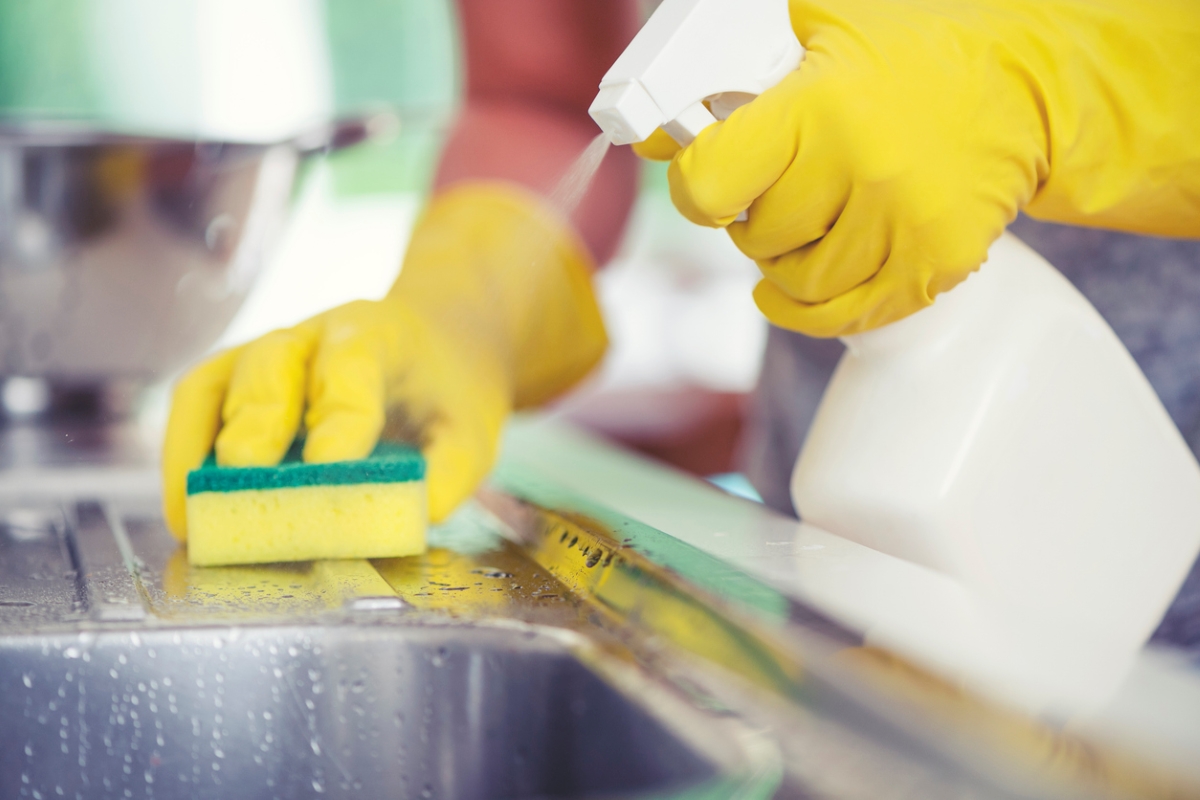We may earn revenue from the products available on this page and participate in affiliate programs. Learn More ›
The world is a grimy place, with bacteria and viruses lurking everywhere you turn. Of particular concern are spots that get a lot of human touch traffic. “These surfaces always have the potential to collect germs which live on our skin or which get transferred from our gastrointestinal tract to our skin,” says Stephen Thomas, M.D., professor and chair of microbiology and immunology at Upstate Medical University in Syracuse, New York. With so many germs teeming on so many surfaces, how can you protect yourself? Practicing cleanliness is the only way.
Maybe you’ve already adopted a few clean habits to minimize your contact with bacteria: Maybe you avoid touching public restroom door handles, or you sanitize your hands after you get cash out at the ATM, or you hit elevator buttons with your elbow. But public spaces are only half the battle. Plenty of challenging germs lurk on high-traffic surfaces in your own home. What are some of these gross spots in your house, and more important, how do you clean them? Some of these may surprise you.
1. Kitchen Sponge
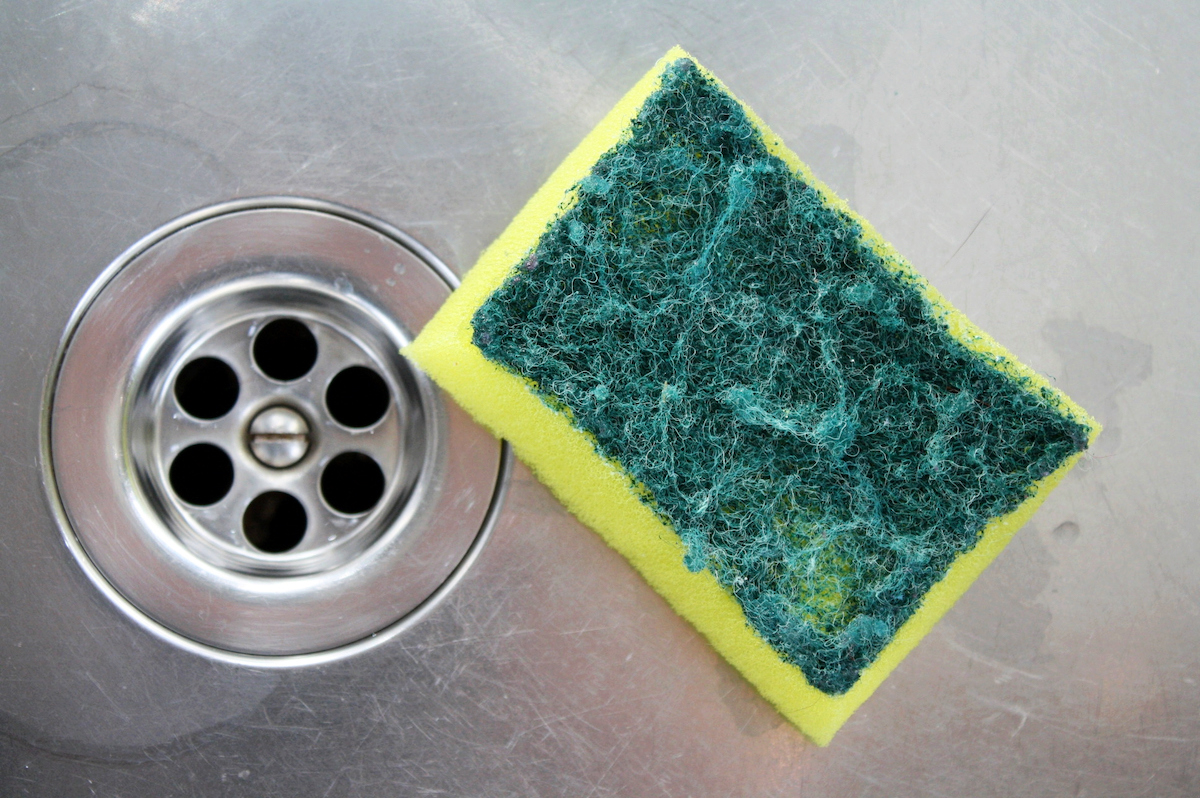
If you’re on after-dinner dish duty, you might want to think twice before reaching for your trusty kitchen sponge. A study published in 2017 found roughly 362 different species of bacteria in 28 samples taken from 14 used dish sponges. Yuck! To clean up your dishwashing routine, clean your sponge every day. You can kill bacteria by microwaving a damp sponge on high for 1 minute, or by soaking it in a solution of water and a small amount of bleach.
To effectively combat germs, however, you should replace your sponge every week or so. If a multitude of fresh sponges is out of your budget, switch from a sponge to a dishrag, and wash the dish rag frequently.
2. Video Game Controller

As it turns out, video games put more than Princess Peach’s freedom at risk—they can put your health at risk too. One study conducted by online gambling company Betway tested several types of gaming controllers and found surprising amounts of bacteria on them. The PlayStation controllers they tested had the most colony-forming bacteria units (roughly 72.5) per swab taken, which is 2.4 times more than would be expected to be found on a toilet seat.
If you use your gaming system regularly, you should clean the controller every week or so to keep germs in check. First, remove the batteries from the controller, and then scrub the crevices with a dry toothbrush. Wet a cloth with a mixture of water and rubbing alcohol, and rub lightly over the surface of the controller to sanitize. Let it dry completely before using it.
3. Coffee Maker Reservoir
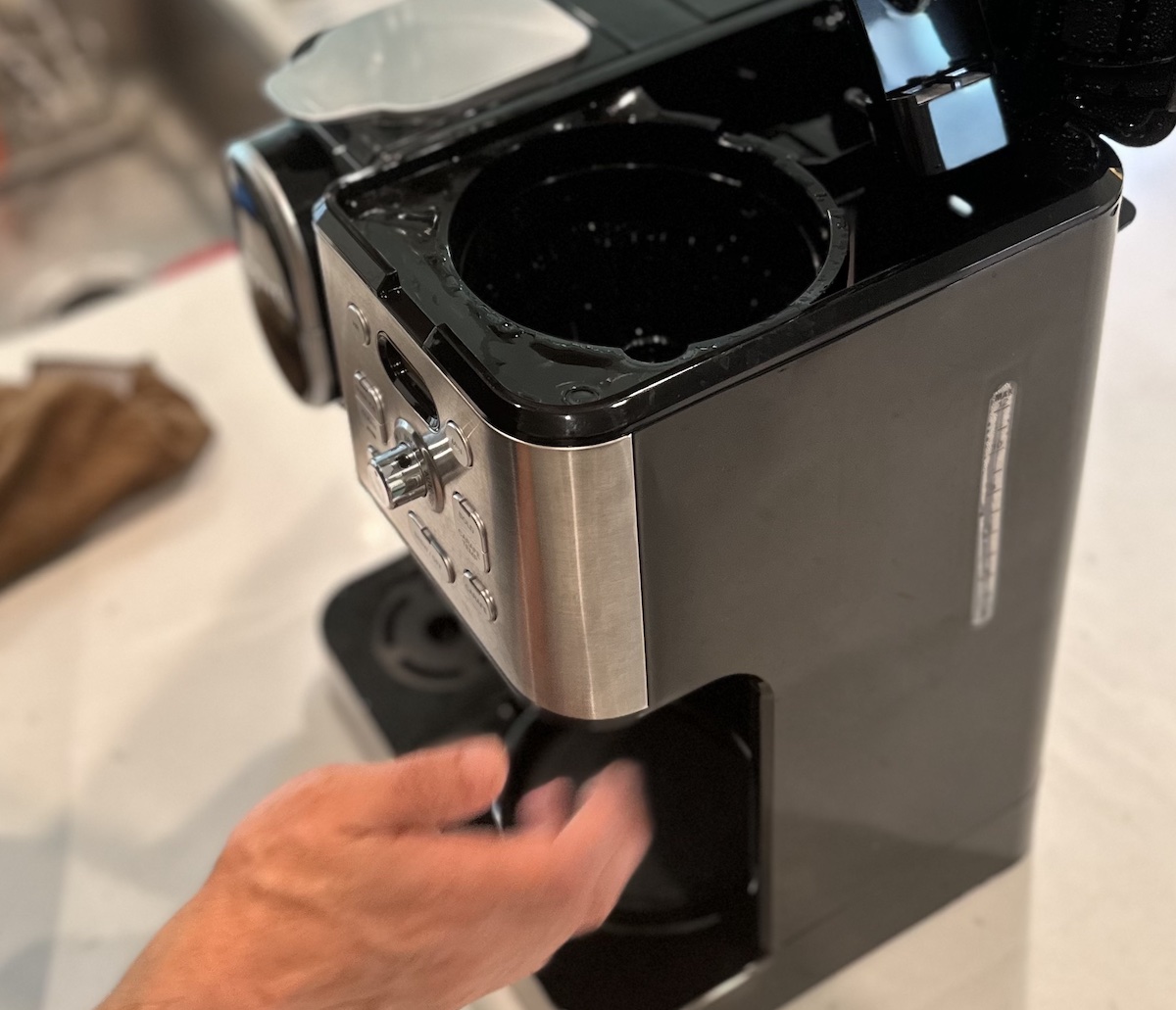
That morning cup of joe could be putting you in contact with a major amount of bacteria, according to researchers at NSF, an independent public health organization. Their scientists found yeast and mold in half of the reservoirs of household coffee makers they tested.
There’s no need to swear off caffeine, though. Resolve to clean the coffee maker reservoir every month or so, depending on how frequently you use the machine. Start by filling the reservoir with equal parts vinegar and water, and then set the coffee maker to brew. When the cycle is done, run a cycle with just water to clear out the vinegar taste. If you can’t commit to frequent cleaning, consider switching to a dishwasher-safe French press, for a cleaner—and tastier—caffeine fix.
4. Toothbrush Holder
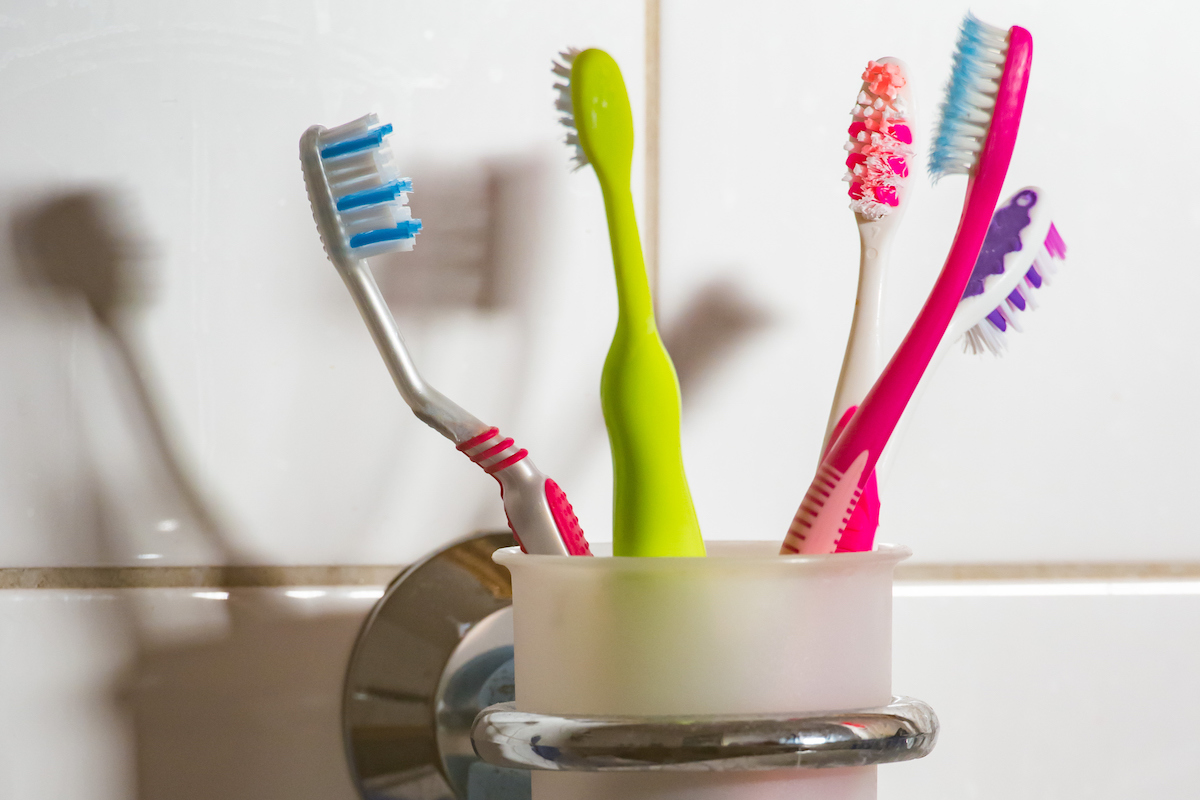
Brushing your teeth is an important part of your hygiene routine, but the very cleaning tools you use to brush could be spreading more germs than they eliminate.
One-third of the household toothbrush holders studied by NSF had coliform bacteria present, an indication that fecal matter may be contaminating the surface.
“When people do their business, it is possible not all of the business is flushed down the toilet but can also be liberated into the air and then float around and land on surfaces, including toothbrushes,” Thomas explains. Because toothbrushes and toothbrush holders are generally moist from use, they provide a good medium for bacteria to grow. Thomas says that your “best bet is to make sure the bathrooms are routinely cleaned, and do your best to clean your toothbrush before and after use and to replace it at regular intervals.”
To clean your toothbrush holder, let it sit in a cup of vinegar for about an hour, and then thoroughly rinse and dry it before returning the toothbrushes to their proper place.
If you’ve been trying to minimize contamination by closing the toilet lid before you flush, note that a recent study in the American Journal of Infection Control found that this has no effect on cross contamination. Instead, prevent recontamination by keeping the bathroom clean and disinfected, storing your toothbrushes at a safe distance from the commode, and practicing good handwashing. “Washing your hands regularly is a great way to cut down on what you get on your skin, mouth, eyes, and anywhere else you touch,” Thomas says.
5. Cutting Board

Though there’s some disagreement about which type of cutting board is more sanitary, wood or plastic, they all contain a lot of bacteria. According to Charles Gerba, Ph.D., a microbiologist at the University of Arizona, there is 200 times more fecal bacteria on the average cutting board than on a toilet seat, mostly of which comes from the raw meat you’ve been slicing and dicing. While you try to get that disturbing statistic out of your head, you can commit to giving your cutting board a thorough scrub with good old-fashioned hot water and soap after every use. (If you have a plastic cutting board, just pop it in the dishwasher.) To reduce the risk of cross contamination, FoodSafety.gov recommends keeping one board for fresh produce that won’t be cooked and another for cutting raw meat, poultry, and fish.
6. Cell Phone
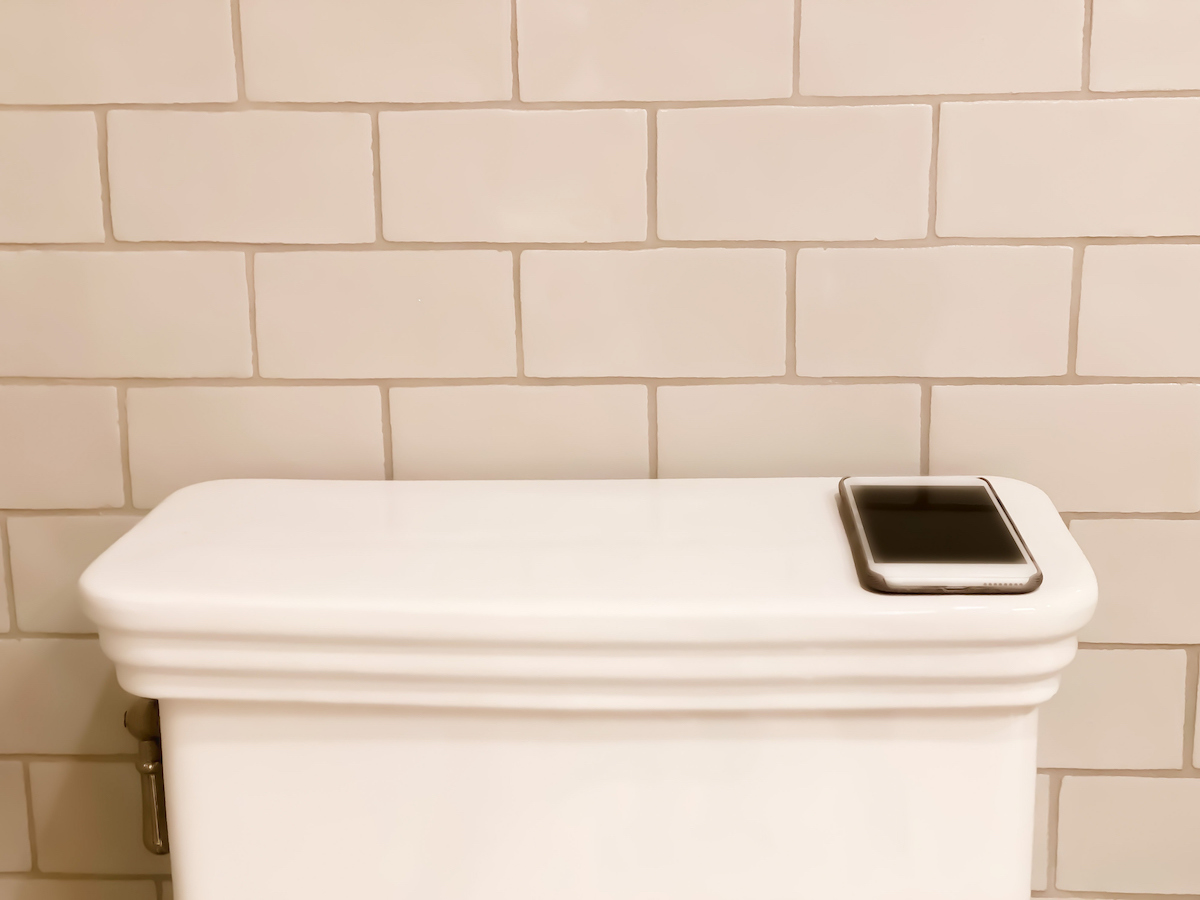
Given all the hours you spend scrolling, texting, and tweeting, your cell phone is probably one of the most germ-ridden things you own. In a recent study of cell phones in a Peruvian town, more than 92 percent of the 127 cell phones sampled showed bacterial growth, and 17 percent of the cultures demonstrated resistance to some tested antibiotics. Don’t let your phone make you—or anyone else—sick. To keep it clean, just mix up water and 70 percent isopropyl alcohol in a spray bottle, lightly spray a microfiber cloth, and swipe it across your screen and phone case about once a week.
7. Stove Knobs
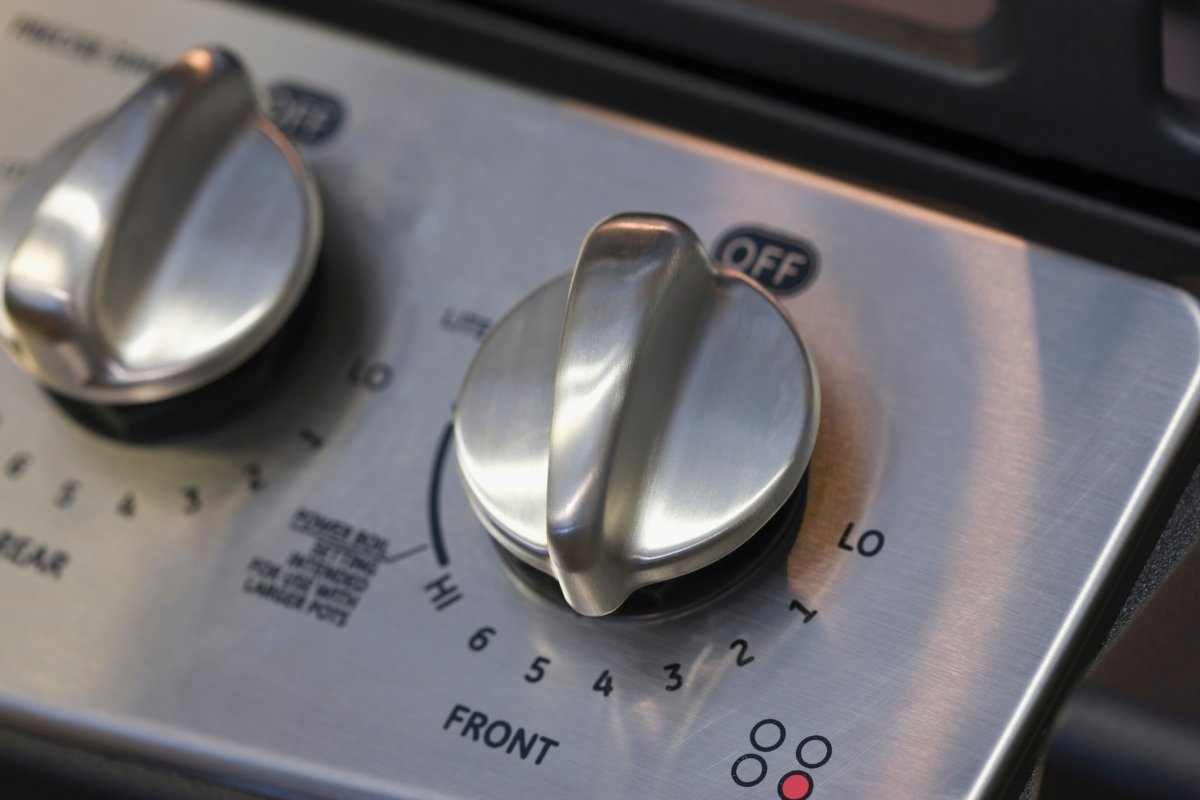
When you cook dinner, you probably turn on the stove without considering the nasty germs that may be lurking on it. But did you know that your stove’s seemingly innocuous knobs are among the dirtiest spots in your kitchen? It’s true: The 2011 NSF study found that almost one-third of stove knobs harbored yeast or mold. To banish the germs, remove your stove knobs and soak them in a solution of white vinegar and water to disinfect them. If the stove knobs cannot be removed, simply spray them with a natural cleanser and wipe them down after 30 seconds to restore them to pristine condition.
8. Handbag Handles
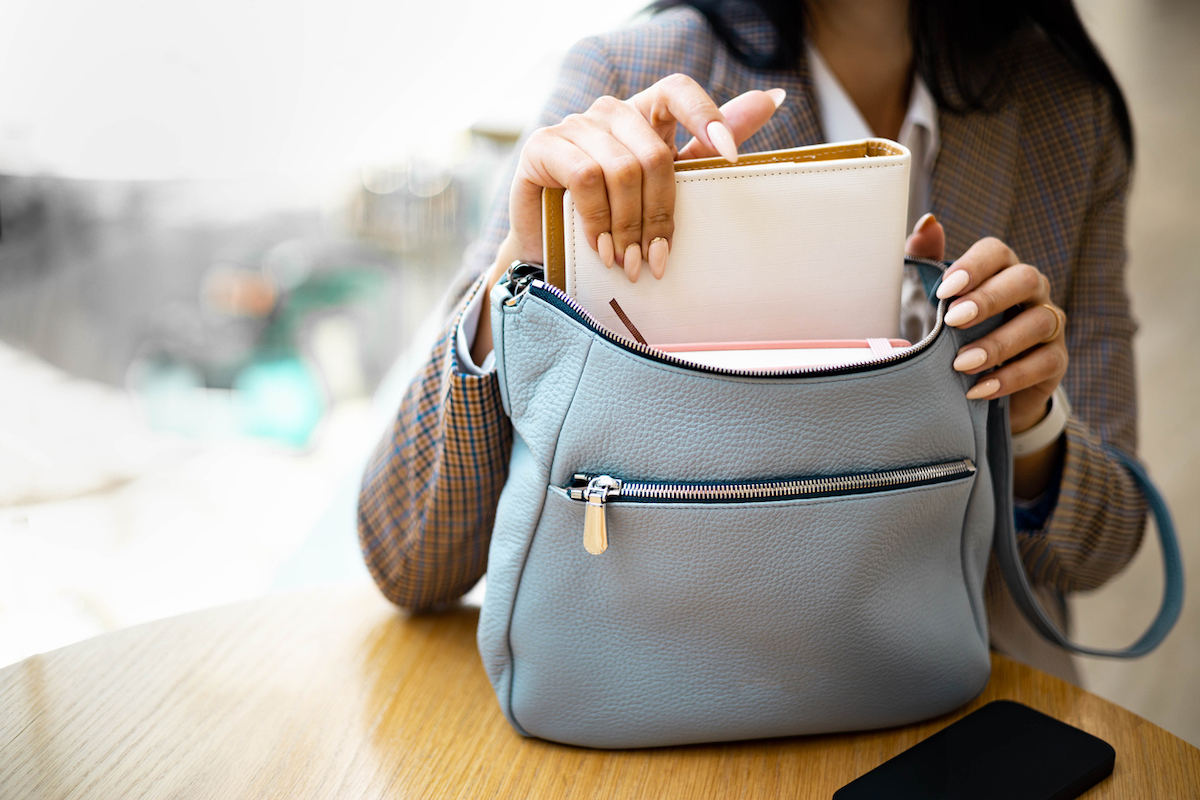
Your purse goes everywhere with you—the store, the office, and maybe even the public restroom—so it’s not surprising that it picks up a lot of bacteria on its travels. In a study published in 2015, researchers tested 145 purses and found that 138 of them showed bacterial contamination. Their conclusion? Purses are potential vectors for disease transmission. To get those germy hitchhikers off your handbag, depending on the material it’s made of, either clean it inside and out with a disinfectant wipe, or a bit of soap and water on a microfiber cloth.
9. Kitchen Sink

The kitchen sink sees it all: raw chicken, used coffee grounds, and food scraps. Because it’s the hub of so much cooking activity, the sink can get pretty gross. A study published in 2022 tested 10 Houston households for bacteria on the sink drain, refrigerator handle, kitchen counter, and dish sponge. Of these locations, the sink drain had the greatest diversity of bacteria, including foodborne pathogens like Pseudomonas and Escherichia. To cut down on bacteria in the sink, sprinkle it with baking soda and wipe down with a vinegar-soaked paper towel, or pull out the big guns by using a commercial disinfectant spray.
10. Pet Bowl

Sure, Fido won’t hesitate to eat spilled food right off the floor, but that doesn’t mean he’s immune to the bacteria lurking in your home. In fact, according to that 2011 NSF study, the yeast and mold that live in your pet’s bowl make it one of the dirtiest places in the home, and have the potential to make you or your pet sick. As Thomas adds, “the biggest and most well-known source of bacteria in animals is their mouths. Dogs, and especially cats, have mouths that are filled with all sorts of bacteria, some of which can cause horrible infections in humans if the animal scratches or bites you.”
Do your dog (and yourself) a favor by running your pets’ food and water dishes through the dishwasher regularly, and “take a second to think where your pet’s mouth has been before you go in for a smooch,” Thomas says.
